Gilles de Maistre, the renowned storyteller of epic wildlife sagas, has just brought another masterwork to French movie theatres. Le Dernier Jaguar is a feast for the eyes, a treat for the soul, and a boon for the mind.
The mysterious bond between human children and wild animal cubs, as they grow up side by side and forge friendships, is a very special one, and sharing such stories as a movie takes a delicate touch. Ever since his 2018 feature film Mia And the White Lion shot to international fame, followed by the no less successful The Wolf and The Lion, prolific French feature filmmaker Gilles de Maistre has time and again proven his talent to strike the right note between romanticized narrative and educational documentary. On February 7, his latest movie Le Dernier Jaguar (English title: Autumn and The Black Jaguar) opened in over 600 cinemas across France, bearing again what has become his signature style by now:
Growing up in the Amazon rainforest gave Autumn the rarest of friendships – a lost jaguar cub named Hope. When a tragic event forces Autumn to leave Hope for the unknown world of New York City, she dreams for years of going back to the rainforest and her friend. Aged 14, and having grown accustomed to city life, Autumn discovers her childhood village is under threat from animal traffickers and decides she must return to the Amazon to her beloved jaguar. Anja – Autumn’s endearingly clumsy biology teacher – unsuccessfully tries to dissuade her from this reckless plan. Joined by Anja, Autumn embarks on a journey to reunite with Hope and save her from those who seek to destroy the rainforest and its wildlife.
A resemblance to the box office hit Mia and the White Lion is not accidental; in fact, there is a good reason for it as Gilles de Maistre explains in an interview (condensed for brevity):
How would you define your cinema?
I’d say it’s a new kind of militant cinema. I’ve always made films denouncing injustice, inequality, oppression, and crime. But for the past ten years, my wife Prune, who is also the screenwriter for our films, and I, we’ve wanted to advocate for rather than against a cause. Because we’ve come to realize that messages can be conveyed much more effectively this way. Protecting animals, forests, water, the planet, man’s place in nature, the importance of connection, knowledge, and communication, questions about the family, and so on… these are all themes I tackle, but with poetry. What I want is not to denounce, but to be heard.
To achieve this – and I assure you it’s extremely difficult – I start from the greatest complexity and work towards simplicity. I don’t want to address a well-informed audience – those who are already aware of the dangers, pitfalls, shortcomings, etc. – nor do I want to lecture those who are indifferent or guilt-ridden. No, I want to address a family audience. In fact, through the animals and children, we show a picture in which society is represented and questioned. I have an optimistic desire: to talk about serious subjects in a way that encourages discussion and understanding among families.
Where did the idea for The Black Jaguar come from?
Autumn and The Black Jaguar is indirectly linked to Mia and The White Lion. Following its success around the world, viewers were asking for a sequel. This was unthinkable: the relationship between the young girl and the lion had ended with the end of filming, and we couldn’t “pick it up again.” A Mia and The White Lion 2, therefore, was out of the question… but it got me thinking about another idea: to use the same team to highlight the destruction of the Amazon rainforest and the little-known issue of animal trafficking. A film about “animal trafficking” in which this cause would be supported by another extraordinary relationship: that between a child and a jaguar. And so The Black Jaguar was born.
You mention the destruction of the Amazon rainforest and animal trafficking, and it would seem that this has sadly accelerated in recent years…
Deforestation is gigantic and uncontrollable, and animal trafficking is one of the biggest issues in the world. Our projects often start with a message we want to get across. Mia and The White Lion revealed the horror of lion hunting; The Wolf and The Lion denounced the use of animals for entertainment, such as the circus. In The Black Jaguar, we’re dealing with the biggest problem facing mankind today, but in a comedy-adventure way that will speak as much to a French child as to a Colombian one, and as much to a Chinese child as to a Moroccan one. The film will travel: we want our narrative to be universal, international.
Why do you think telling a story through the eyes of a child is a good way of raising public awareness of the value of living things?
If children are the future and they understand the dangers they’re facing and are moving in the right direction, then we’ve won. And who better than a child to talk to other children? That’s why the heroes in my films are children. For 40 years now, I’ve been working on children’s issues through documentaries, especially those of the world’s suffering children. Now I want to film people who are aware of the world around them and who want to fight. Children have the means to build a new world. When in The Black Jaguar we see Autumn, the young girl who sets out to save her jaguar and try to protect the forest through her gesture, we may think it’s a minimal or anecdotal act… But thanks to the butterfly effect, she can inspire other children.
Was it difficult to find the right actress? What did you like about Lumi Pollack?
We absolutely had to have an English-speaking actress, so our casting is international. This is often a complex process, as we have to take into account the cultural differences with Canadians, English, and Americans, who are also much more unionized than we are. Lumi stood out from the crowd thanks to her naturalness, her willingness, and her ability to approach the animal without waiting for it to come to her. That really appealed to me. There was one final essential factor in the casting: parents. You need parents who can handle the adventure. Lumi’s parents were highly motivated.
Where do these jaguars come from?
From Mexico, where the shoot also took place. It’s much more complicated to find black jaguars than spotted ones. Our methodology is to take animals out of places where they could be mistreated to give them a better life. The jaguar is threatened with total extinction, mainly due to deforestation. So, since the end of filming, Hope and Gem have been living in a sanctuary.
We’re witnessing what jaguars can do. Is there anything a jaguar can’t do?
You can’t make a jaguar do anything, you never force it. We organize everything to try to get things. They have not been trained. We just plant the seed of the relationship between an actress and an animal, watch it develop, and unpredictable things emerge. As long as man and animal are friends, there’s no risk. Everything is very safe.
Is there a best time of day to work?
If you want the animal to be energetic, it’s better to work at 7 a.m. because it’s cool. If you want it to fall asleep at the top of the tree, you might want to shoot at noon or 1 pm when it’s hot. We’re at the service of moments like that. Jaguars sleep up to 22 hours a day, so we had to have patience.
Where are the special effects in The Black Jaguar?
We built a fake river, a fake canopy, we used blue backgrounds to give the dimension that you can’t give in the space where the jaguar lived. But the relationship between the child and the animal is based on authenticity and truth.
The character of Anja, the biology teacher, evokes the idea of transmission and teaching. How important was it to address this educational dimension?
Anja is a character who lends a comic dimension to the film. We wanted to pay homage to teachers, with this teacher who goes to the end of her fear to save her student.
By the way, you also show something very beautiful in New York: pigeons, squirrels… Nature is everywhere, even in big cities.
There’s a contradiction in Anja: she saves a hedgehog but dissects frogs. We’re like that in life: we love animals, but when we go to a restaurant, we’ll order prime rib, an animal that may have suffered all its life. That’s also what we’re showing in this character: the contradiction of adults.
Although the true star of the film is of course the majestic jaguar named Hope, Lumi Pollack, the young American actress of Japanese and Colombian descent, more than holds her own on screen. She launched her acting career in 2020 at the age of 11. For the lead role of Autumn, she spent ten intensive months bonding with a jaguar in the Mexican jungle, then completed filming in various locations in Mexico and concluded the year-long shoot in Montreal in December 2022.
Lumi and her “younger self” Airam (who plays Autumn as a child) spent two hours each day to interact with the animals, to talk to them, to familiarize themselves and, in the end, to become part of their environment. “Between Lumi Pollack and the female jaguar you see in the film, there’s a real complicity, they get on really well,” says Jean-Philippe Magnone who coordinated the relationship between animals and actresses. “Airam spent four months with the baby jaguars to prepare for the first scenes of the film. When children and animals grow up together, they don’t see themselves growing up. To them, they’re always the same size. So there was no particular apprehension on the part of our actresses.”
Usually, when working with a feline in a film, panthers are the first choice. “They are easier to train, it’s a much more docile animal,” explains Jean-Philippe Magnone. “The jaguar, on the other hand, is very complicated. That’s what made me wonder about the fact that I really wanted to use real jaguars – they’re not the easiest thing.” Gilles de Maistre, however, defends his decision: “My films are for real. I don’t use a black panther to defend the Amazon rainforest, I really want jaguars.” Having already worked with other wild animals like lions and wolves, he knows that the power of creating links is very strong. “That’s what I defend in my films, and I’m not going to not believe it in real life,” says the director.
The behind-the-scenes roles of animal impregnator (also known as imprinter) and animal trainer/welfare supervisor are pivotal ones, and both belonged to absolute experts in their field. Jean-Philippe Magnone comes from a background in wildlife conservation and animal protection. He served as the on-set coordinator, preparing both actors and animals for the film. His work reveals the intricate balance required when filming with wild animals, particularly jaguars known for their solitary nature and unpredictable behaviors. His emphasis on fostering trust and playfulness during filming underscores a profound understanding of animal psychology and welfare. Jean-Philippe Magnone works in close liaison with Kurt Bayford, an experienced animal trainer who has worked on over 50 films and TV series, managing wolves, bears, and big cats. Kurt’s focus is on ensuring animal welfare, and he also performs stunts for animal attack scenes.
If Gilles de Maistre is the artistic mastermind behind his films, his wife Prune de Maistre is the talented wordsmith behind the endeavour. After a career as an investigator and journalist for television programmes, documentary series, and films, she ventured into fiction screenwriting with Mia and the White Lion. Sharing Gilles’s passion for educational and environmental causes, she has since penned several films, including The Wolf and the Lion, Moon the Panda, and now The Black Jaguar, all advocating for children, animals, and nature.
Apart from the movie’s entertainment and educational aspect, Gilles de Maistre also wants to raise awareness for an environmental urgency: there are only 15,000 jaguars left in the Amazon (and 173,000 in the world), with the species threatened by poaching and deforestation. While most jaguars are known for their spotted fur, black ones are very rare in nature – only about 600 of them are still left in the wild. To protect the two jaguars who star in the film, they were transferred to a nature reserve at the end of the shoot.
Le Dernier Jaguar is now out in French and European cinemas. Ranking second in the box office in France in its second week, with an approval rating of 90% and 200,000 visitors, as well as 400,000 visitors in Germany, and 100,000 in Poland… numbers that speak for themselves.
All images © 2023 MAI JUIN PRODUCTIONS – WISHING TREE PRODUCTIONS – STUDIOCANAL, except photo of Gilles de Maistre, courtesy Wikimedia Commons, licensed under CC BY-SA 4.0 DEED


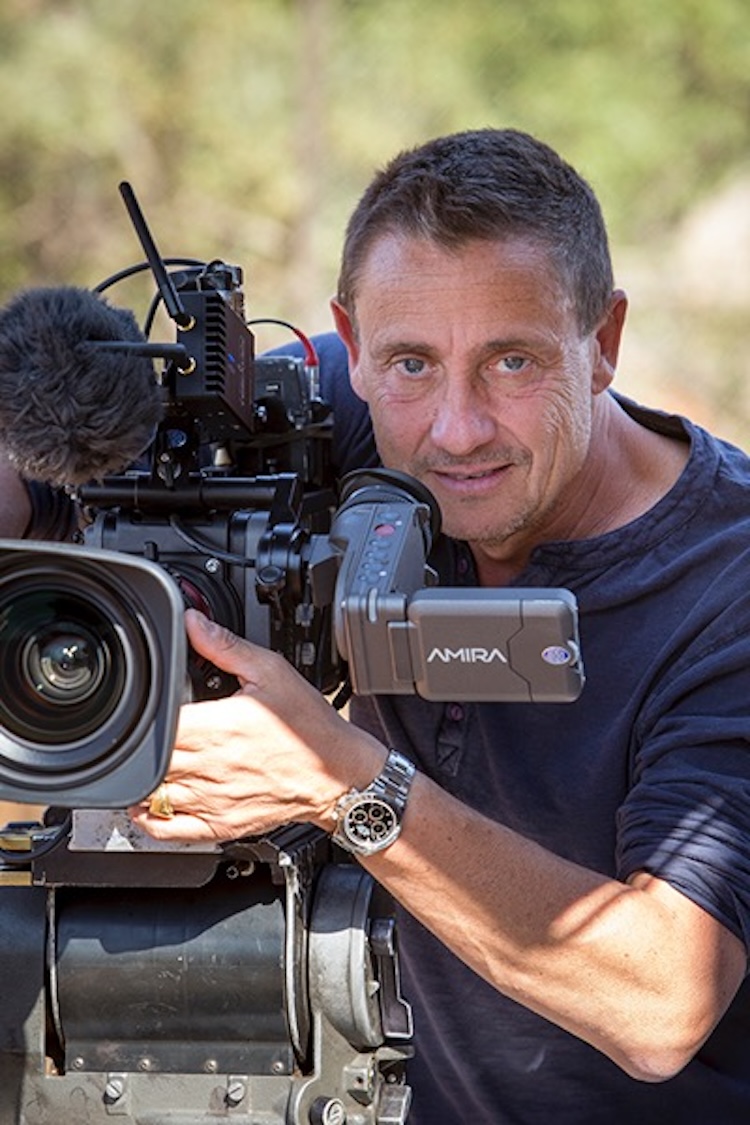
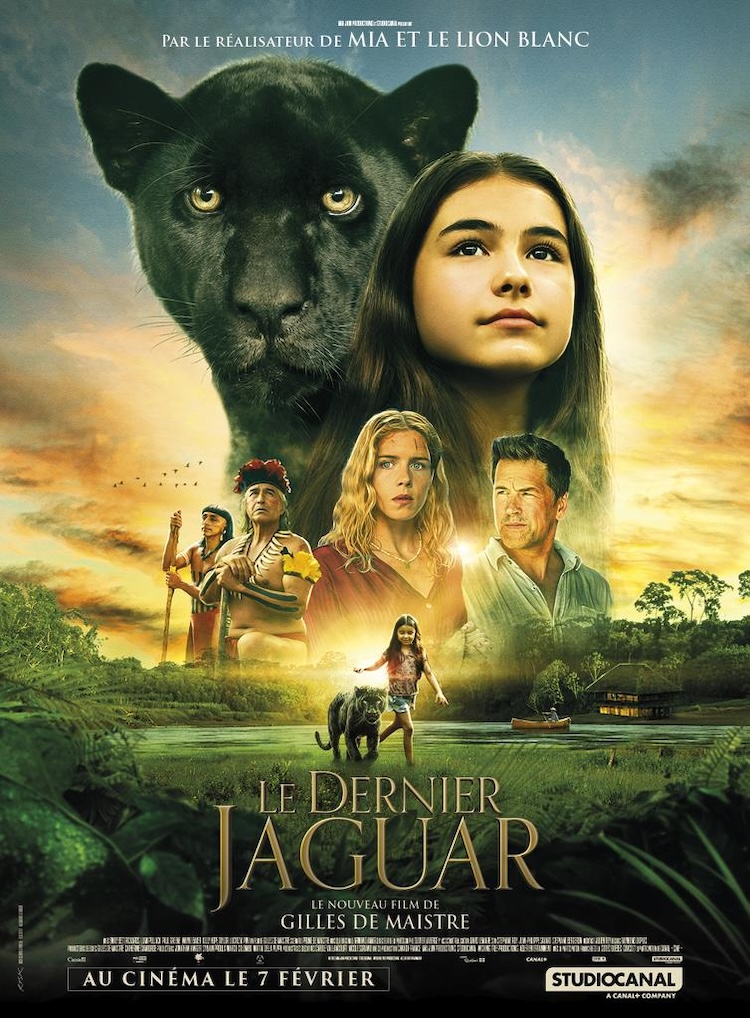
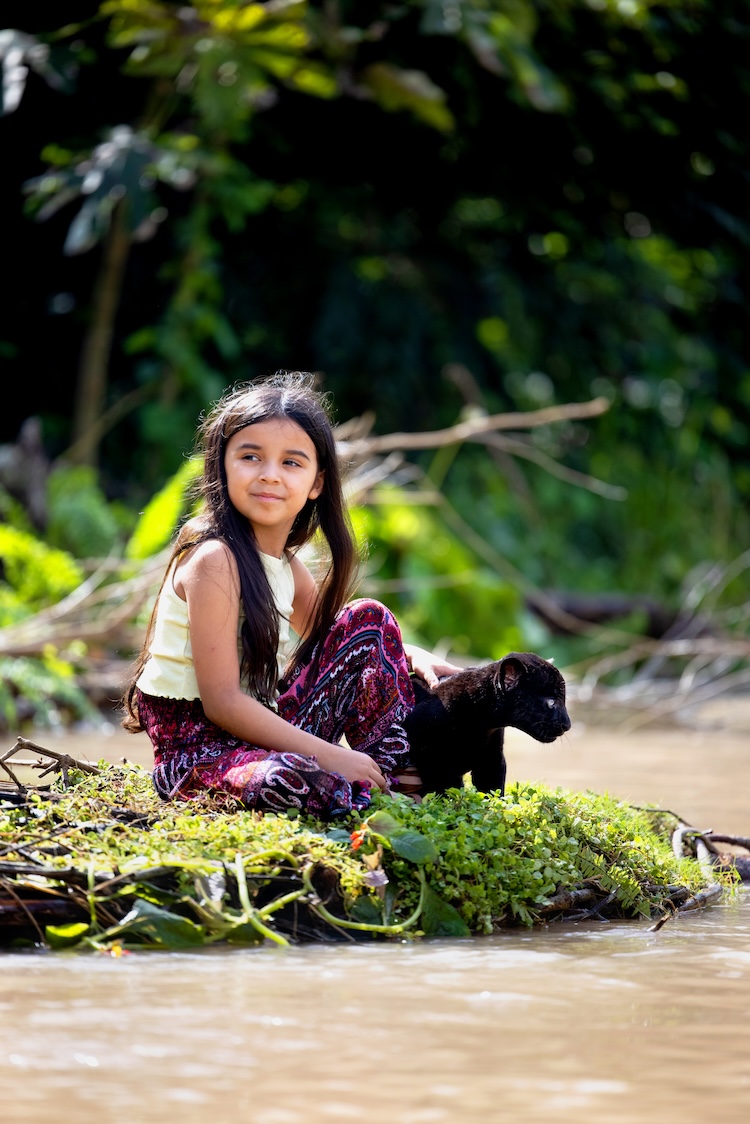
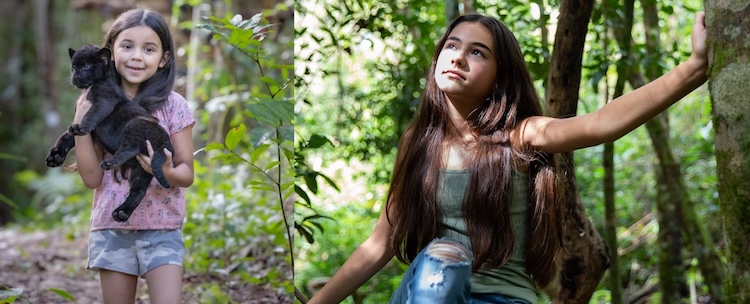
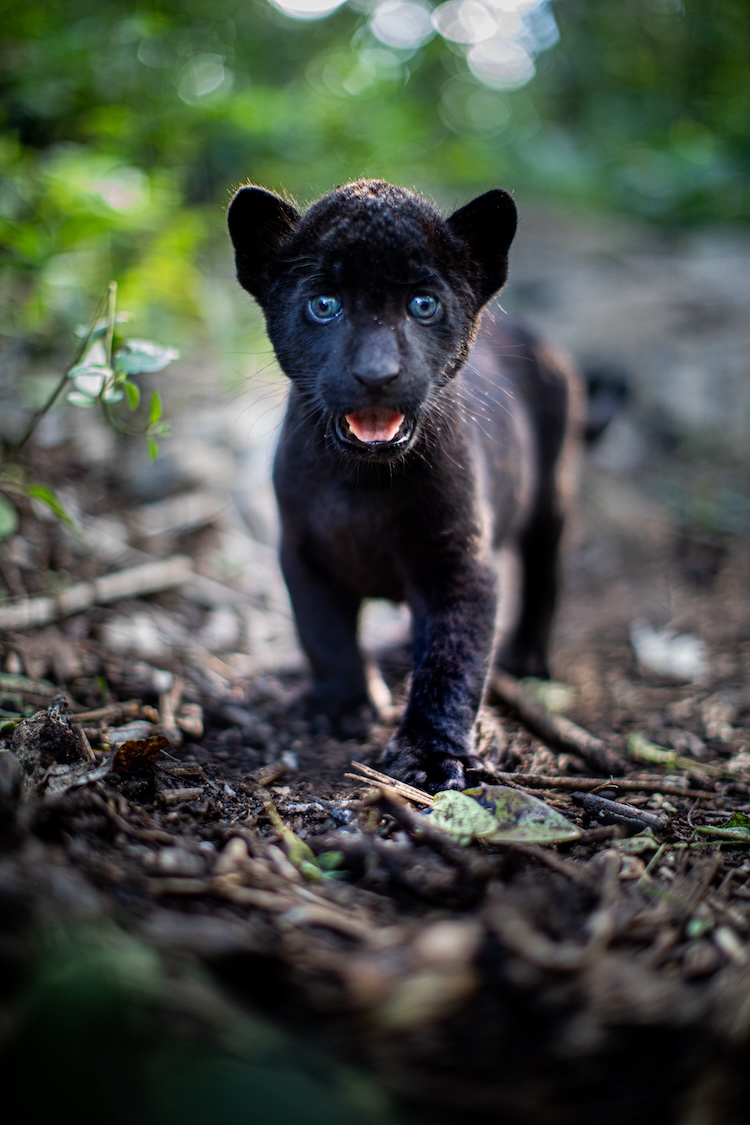
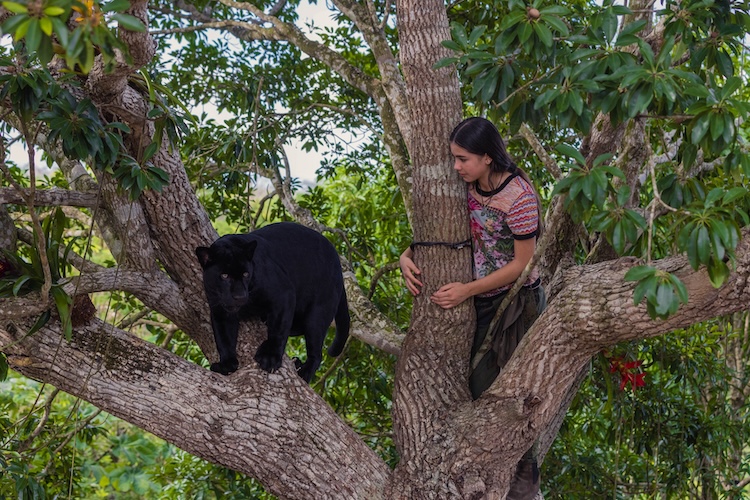
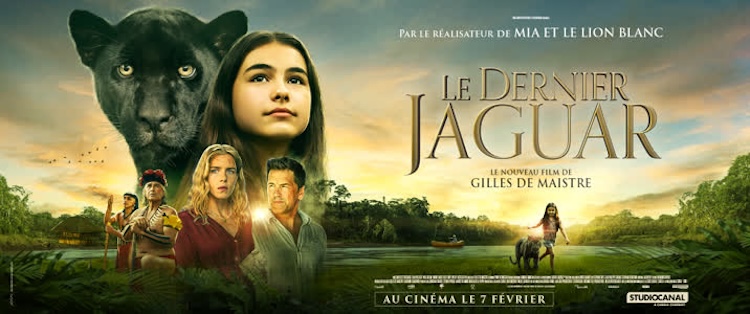
Leave a Reply